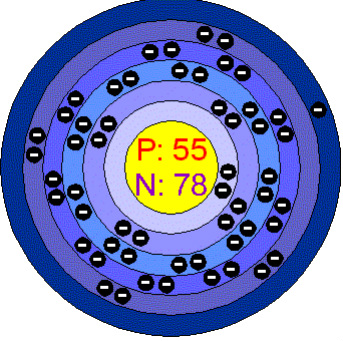
Caesium block in periodic tableīlock is a generic term for a collection of elements from the periodic table. Let us check to which period Caesium belongs.Ĭaesium(Cs) elements lie in the 6th period of the modern periodic table. In the periodic table, a period is a row of elements. In the periodic table Caesium(Cs) lie in group 1. Let us check the Group of Caesium belongs. In the periodic table, a group is a column of elements. Let us check the atomic symbol of Caesium.Ĭaesium(Cs) is represented with the symbol Cs in the periodic table.
FUN FACTS ABOUT CAESIUM CODE
Caesium symbolĪ code is used to distinguish one element from another in the Periodic Table of Elements. Let us discuss some more chemical properties like melting point, boiling point, ionization energy, and oxidation state in detail below. It is having atomic number 55 u and a mass is 132.9 g/mol. Let us study some facts about Caesium.Ĭaesium(Cs) is an alkali metal element that belongs to the hydrogen family in the periodic table. It was named after the capital of Greece, ‘Athens’.Caesium(Cs) element also written as Cesium is a chemical element that belongs to the group 1st. Before this Official name, ‘Einsteinium’ was unOfficially named as ‘Athenium’. However, safety precautions are mandatory while with such radioactive elements.Ģ0. It is radioactive but, no health risks were recorded till date. But, it could not be attacked by Alkali metals like Lithium(Li), Sodium(Na), Potassium(k), Rubidium(Rb), Caesium(Cs), and Francium(Fr).ġ9. According to the Royal Society of Chemistry, Einsteinium could be attacked by Oxygen, steam, and acids because it is an Actinide Element in Periodic Table. First measurable Einsteinium was produced in 1961 by the researchers in Berkley. Einsteinium has no daily life application except scientific research.ġ7. As it is radioactive, it glows blue in dark due to energy emission & radioactive decay.ġ6. Einsteinium is soft and silvery in color.ġ5. All transuranic elements are radioactive and were artificially made in the lab.ġ4. Einsteinium is the seventh transuranic element in the Periodic table. Einsteinium-253 has 20.47 days of half life.ġ3. Einsteinium-253 Isotope was produced by the combination of 15 neutrons with Uranium-238.ġ2. Most stable Isotope of Einsteinium has 471.7 days of half life.ġ1. According to LiveScience, Einsteinium has 19 artificial isotopes and all of them are unstable.ġ0. Einsteinium was created by the bombardment of Neutrons with the Plutonium atoms in a Nuclear reactor.ĩ. Atomic density of Einsteinium is 8.84 gm/cm^3.Ĩ. Total atomic weight of an Einsteinium atom is (99+153) = 252.ħ. Einsteinium has 153 Neutrons in It’s Nucleus.Ħ. However, its exact boiling point is still unknown.ĥ. It is solid at room temperature and it’s melting point is 860° C. ‘Es’ is the atomic symbol of Einsteinium in Periodic table.ģ. Einsteinium has 99 protons in Nucleus, so it’s atomic number is 99.Ģ.


Here is a list of 20 interesting facts about Einsteinium:ġ.

For this reason, the name sounds familiar but, there are many facts that are still unknown. It has only 20.47 days of half life which makes it very unstable in nature.Īn international team of scientists from Lawrence Berkeley National Laboratory, the Argonne National Laboratory, and the Los Alamos Scientific Laboratory discovered this element in 1952.Albert Ghiorso was the lead scientist of this research and it was found during the examination of debris from the first hydrogen bomb test at the beginning of the cold war.Īccording to Chemicool, These findings were not published until 1955 because during this time the Cold War were running high and many new discoveries were kept secret.Einsteinium is named after the honor of great scientist and theoretical physicist Albert Einstein. It is the seventh synthetic Transuranium element of the Actinide series. The 99th element of Periodic Table is known as ‘Einsteinium’.


 0 kommentar(er)
0 kommentar(er)
